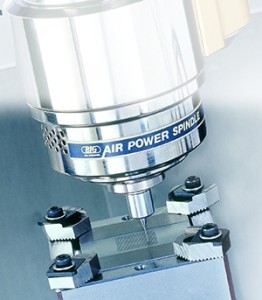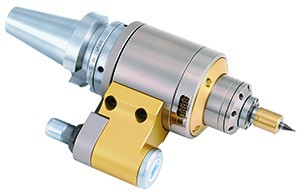Shrinking Devices Grow Supplier Opportunities
Thanks to the medical industry, talking heads and scribes have had ammunition for seemingly endless hours and pages of debate and bloviating of late. The politically charged Affordable Care Act and the dramatic way it’s changing how we access and consume medical services has fueled a national discussion that’s filled airwaves and papers.
But, beneath the thick layer of the mainstream media and the 24-hour news cycle are less-talked-about, but just-as-deserving-of-attention developments happening on the practical front of the medical industry. Unprecedented breakthroughs in understanding of anatomy, afflictions and treatments that once confounded us are driving the development of less and less invasive procedures. By nature, the tools used to perform these emerging procedures and deliver treatment are smaller and more precise.
As medical professionals are mastering these new techniques their practice is becoming more widespread. Demand for the various intravenous implants, imaging technology, and injection hardware is surging. That’s where the ripple effect is washing over the metalworking industry.
This may sound alarms for shops not equipped for the high-speed rotation, low dynamic runout machining required to perform in the industry-accepted micro drill diameter range of 0.50-2.5 mm, but it shouldn’t. All your machine truly needs is high sensitivity and fine resolution in the feed axis. There’s a powerful tooling configuration that can ensure shops don’t miss out on the sub-popular developments shaping the future of practical medicine without investing in capital equipment or reconfiguring the whole operation.
The combination of air turbine spindle speeders and micro drills designed and built specifically for jobs that deal in microns instead of inches can make most shops capable of cashing in on the growing demand.
Air-powered speeder systems supercharge a machine in a completely different way than gear-driven speeders and offer benefits that make micro machining an even more accessible venture.
For one, the machine tool spindle does not even rotate. The drive is in the tool itself and is powered by air that enters through the stop block. All the machine does is move the tool around and through the part. An air-powered speeder in essence gives the machine’s spindle a break and thermal expansion from high speeds is not even a consideration for affecting accuracy. And if the machine is being dedicated to cutting the highly detailed, multiple-entry-point parts often required in the medical industry, this can pay big dividends.
There’s more. Air-driven speeders like the ones BIG DAISHOWA offers are designed to run for more than 2,000 hours before service, consume significantly less power than spinning the machine tool spindle itself and are compatible with automatic tool changers. Put all that together and you have the makings of an efficient, productive and most importantly profitable medical machine tool set up…and all without significantly disrupting your operation or breaking the bank.
The other key ingredient is the right tool itself, the often smaller-than-a-human-hair edge where metal meets metal in medical device work. At such small diameters, room for error is almost nonexistent. The modifications being made to the part are so minute, any error disrupts the integrity of the entire component. That’s why BIG DAISHOWA recommends a maximum total indicated runout (TIR) of less than 0.0001” and that tools are inspected each time they are changed out.
There are some fundamental requirements of the tool that can make sure delicate pieces come out correctly and consistently. Micro tooling needs edges that are super rigid and highly resistant to abrasion and uneven wear. These tiny tools are simply not capable of getting through the workpiece with precision otherwise. If the tool wears unevenly, more force is required to evacuate chips. The extra heat generated increases the chances of the tiny chips melting instead of clean cuts and removal; the project is done before it even begins.
The best way to counteract uneven wear is with a tool that has smooth surfaces made up of ultrafine grade carbide, specifically, grain sizes in the nanometer range like those available in the SPHINX line – a Swiss partner of BIG DAISHOWA—Americas with a core competency in micro tooling. Another important consideration is of course the material being machined. There are so many variables in this relationship that we recommend working directly with your tooling vendor to find the most durable, effective combination, especially when employing a spindle speeder.
The stakes are high in micromachining. But, as new discoveries unfold, medical equipment will only be getting smaller. The movement is gaining steam. It takes commitment and time, but with a supplier willing to be your partner like BIG DAISHOWA always is, making your shop a player in the medical game doesn’t need to be such a scary proposition.
Did you find this interesting or helpful? Let us know what you think by adding your comments or questions below.







Add new comment